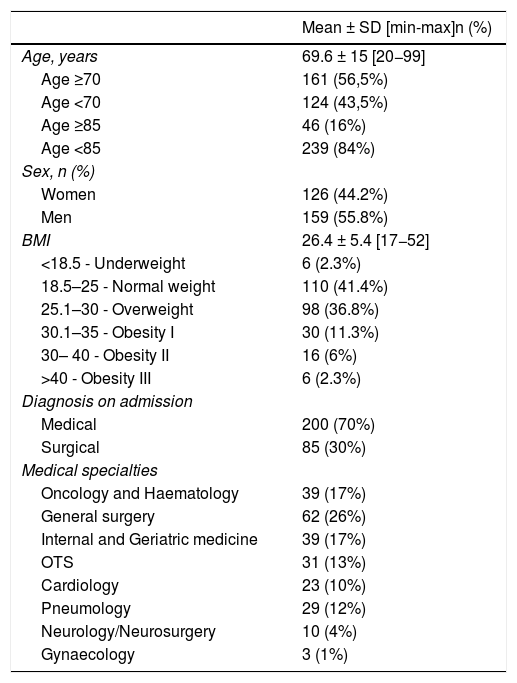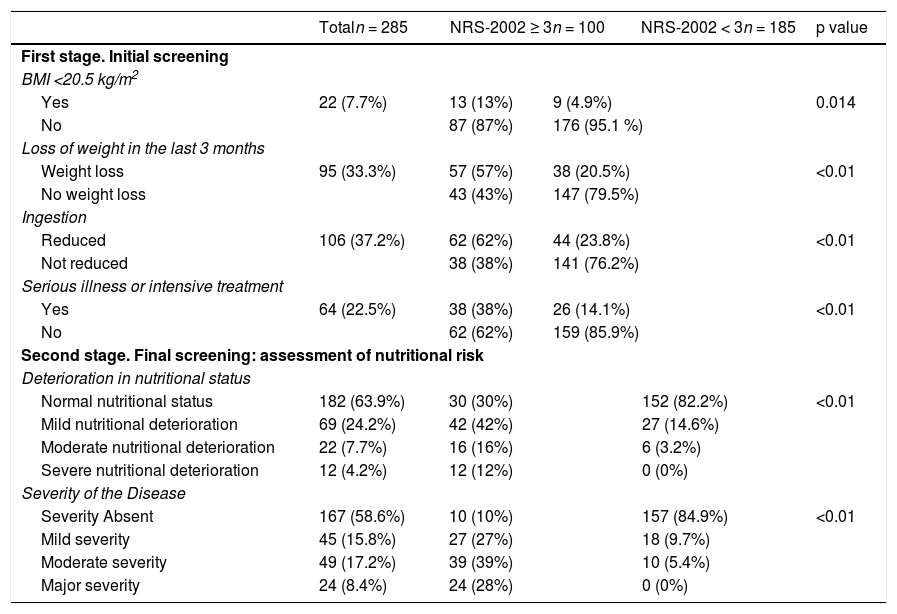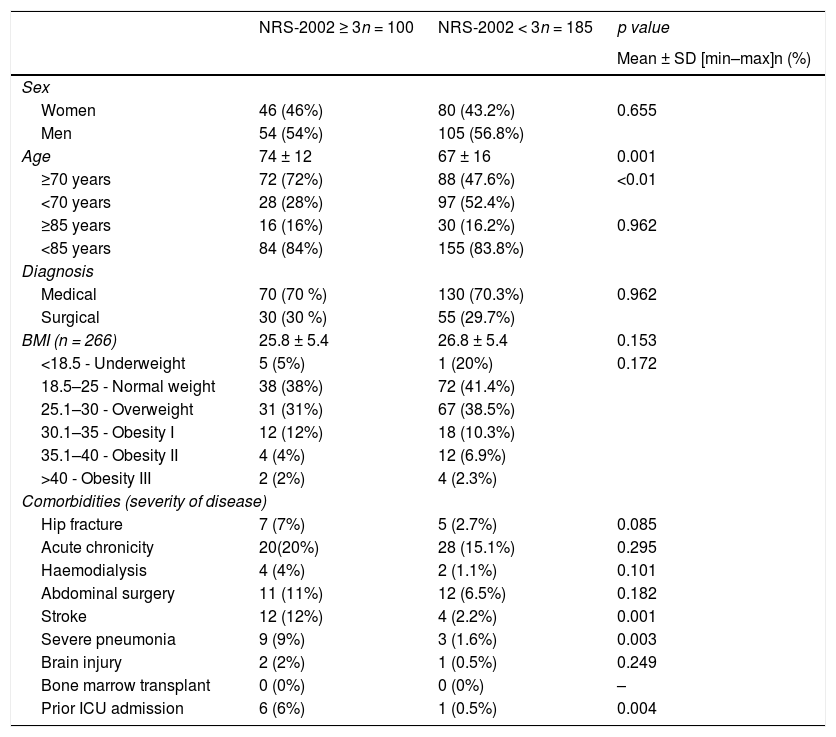To determine the prevalence of nutritional risk in hospital admission of adult patients and to analyse its association with sociodemographic and clinical factors of the patients.
MethodCross-sectional, analytical and prospective study carried out on patients at the Hospital de la Santa Creu i Sant Pau in Barcelona between November and December 2018, during the first 48 h of hospital admission. Nutrition Risk Screening (NRS-2002) was used to detect malnutrition. Sociodemographic (age, sex), clinical (admission diagnosis, unit and comorbidities) and anthropometric (weight, height and BMI) data were collected. The association between the NRS and the study factors was estimated using a logistic regression model.
Result285 patients with a mean age of 69.6 years (SD 15) were included, of which 56.5% (161) were ≥70 years. The prevalence of risk of malnutrition at hospital admission was 35.1% (95% CI: 29.8 %–41.1 %), this being 15.9 times higher in patients with a previous stay in intensive care (OR 15.90, 1.82–139.11: p 0.012); 10.35 times higher in patients with severe pneumonia (OR 10.35; 2.48–41.91: p 0.004) and 5.6 times higher in patients with stroke (OR 5.63; 1.71–18.53: p 0.004).
ConclusionsThe prevalence of nutritional risk at admission was high and factors such as severe pneumonia, stroke and previous ICU admissions were associated with a higher risk of malnutrition. However, the findings of this study should be interpreted with caution due to the limitations of the severity criteria of the Nutrition Risk Screening.
Determinar la prevalencia de riesgo nutricional en el ingreso hospitalario de pacientes adultos y analizar su asociación con factores sociodemográficos y clínicos de los pacientes.
MétodoEstudio transversal, analítico y prospectivo realizado a pacientes del Hospital de la Santa Creu i Sant Pau de Barcelona entre noviembre y diciembre de 2018, durante las primeras 48 horas de ingreso hospitalario. Para detectar la desnutrición se utilizó la Nutrition Risk Screening (NRS-2002). Se recogieron datos sociodemográficos (edad, sexo), clínicos (diagnóstico de ingreso, unidad y comorbilidades) y antropométricos (peso, talla y IMC). La asociación entre la NRS y los factores de estudio se estimó mediante un modelo de regresión logística.
ResultadoSe incluyeron 285 pacientes con una edad media de 69,6 años (DS 15), de los cuales un 56,5% (161) tenían ≥70 años. La prevalencia de riesgo de desnutrición en el ingreso hospitalario era del 35,1% (95%IC: 29,8 %–41,1%), siendo 15,9 veces mayor en pacientes con una estancia previa en cuidados intensivos (OR 15,90; 1,82–139,11: p 0.012); 10,35 veces mayor en pacientes neumonía severa (OR 10,35; 2,48−41,91: p 0.004) y 5,6 veces mayor en pacientes con AVC (OR 5,63; 1,71−18,53: p 0.004).
ConclusionesLa prevalencia de riesgo nutricional al ingreso era elevada y factores como la neumonía severa, el AVC y los ingresos previos en UCI, se asociaron a mayor riesgo de desnutrición. Sin embargo, los hallazgos de este estudio deben interpretarse con cautela debido a las limitaciones de los criterios de gravedad de la Nutrition Risk Screening y a las características de la población estudiada.












